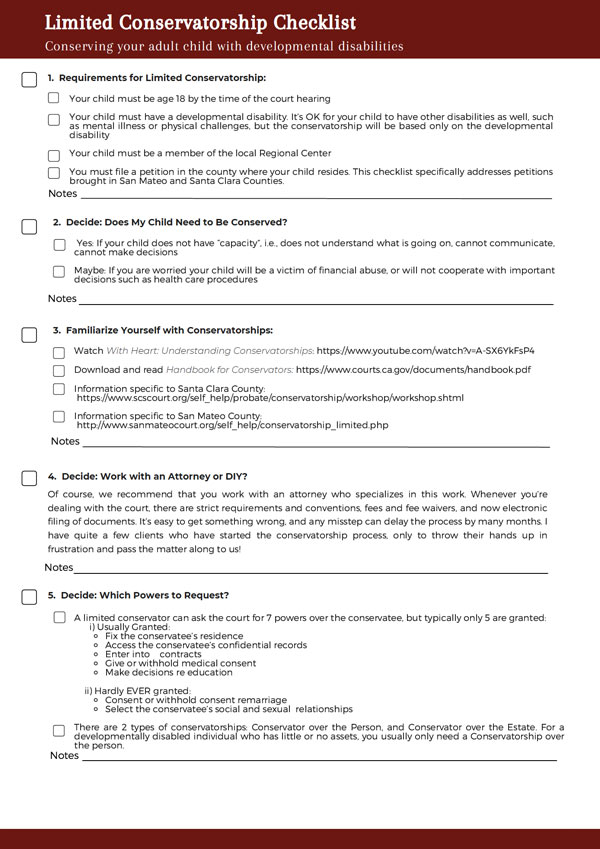Limited Conservatorship
We no longer assist with Limited Conservatorships, but we are happy to provide referrals to attorneys who do prepare them. We also happily provide resources on our website and our YouTube channel to assist you in the process.
A conservatorship is basically a process in California where a person can go to court and seek to obtain control over an individual over age 18. Compare this to a guardianship, which is the ability to make decisions for minors. There are 3 types of conservatorships:
There are 7 powers that a person can seek over a developmentally disabled person (the “proposed conservatee”):
Process for a Limited Conservatorship
It typically takes three to six months to obtain a limited conservatorship, and you always have to go through the court system in the county where the proposed conservatee lives. Here are the main steps involved in obtaining a limited conservatorship:

